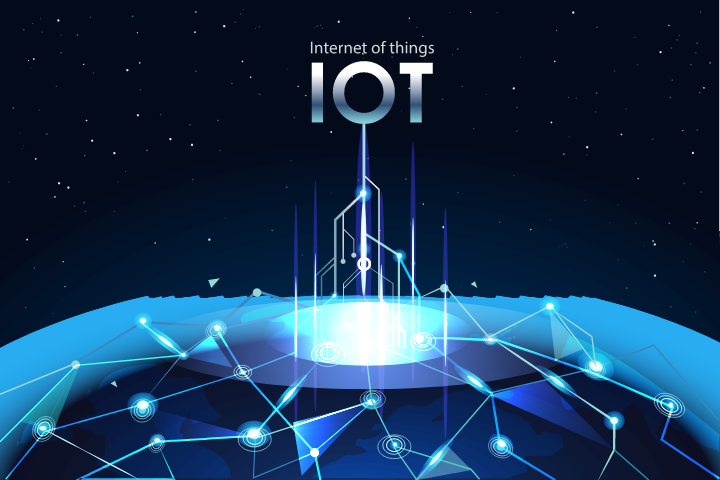
The Internet of Things (IoT) is today almost omnipresent in everyone’s day-to-day life. From Wi-Fi kettles to elaborate and professional data analysing machines, since most electronic devices are now connected to the Internet.
It is important to define, first of all, what IoT is. It is a system of interlinked devices, from computers to basic objects, that can exchange data over a network and have unique identifiers (UIDs) without the need for human-to-human or human-to-computer interaction.

What are the best open-source software tools?
Initially, one of the main driving forces behind IoT was the open-source community whose constant experimentation, combined with accelerating technological possibilities, created many new and interesting applications.
Today, here are the best open-source tools for IoT development.
OpenRemote
OpenRemote’s focus is to allow users to create professional applications of energy, crowd or more general asset management.
The main features this software offers are auto divide provisioning, availability on both Android and iOS consoles, multi-realms and multi-tenant solutions, account management and a flow editor for data processing.
OpenRemote also provides a central system to access all data, sensors and controls. This way, every component can be managed in a single interface.
Node-RED
If you are more interested in event-driven applications, Node-RED is the tool for you. It allows its users to wire together hardware devices, APIs and online services.
It includes a browser-based editor that makes the connection of flows easier, thanks to its browser-based flow editing, built-on Node.js, and the fact that the flows created are stored using JSON, which is easily shareable and imported.
Arduino
Arduino can create a computer that can perceive and exercise stronger functions, and it does so in a simple and straightforward way.
It includes a mix of IoT hardware and software, and it works through an array of hardware specifications that are used to make interactive electronics.
Code can be written in the Arduino programming language, and the software also receives inputs from a range of sensors, affecting its surroundings by controlling lights and motors.
Flutter
To put it simply, Flutter is a programmable processor core for all kinds of electronic projects. Its versatility is perceived since it is usable by both students and beginners and engineers.
It also takes after Arduino, in the sense that its board is similar. It includes a wireless transmitter that works great long-range, without requiring a router, since its flutter boards can exchange information quite quickly.
ThingsBoard
If you are interested in data collection, processing, visualisation and device management, ThingsBoard is the open-source IoT platform for you.
It assures device connectivity with industry-standard protocols like MQTT, CoAP and HTTP. Its main features include scalability, production and fault tolerance, as well as easy control of all connected devices in a secure system. It also offers customisable rule groups and can handle millions of devices at the same time.
Kaa IoT Platform
Kaa is a middleware platform that establishes end-to-end IoT solutions, connected applications and even smart devices.
It is a flexible and multi-purpose platform, as it allows the user to have effective communication and to bring forward internal operations in a short amount of time. It is perfect for both small startups and bigger enterprises, and it also works on a cloud basis.
In addition, there is no limit on the number of connected devices that it can manage, and it also offers real-time device monitoring at all times.
SiteWhere
The functions of SiteWhere are varied, from ingestion to repository and from processing to the assimilation of device inputs.
The operating system behind it is Apache Tomcat, which ensures that SiteWhere can be deployed on platforms like AWS, Azure and GCP.
It connects devices with MQTT, Stomp, AMQP and other protocols, as well as adding widgets through self-registration or in batches.
Nabto Edge Embedded Device SDK
Nabto Edge allows communication among devices and apps within an IoT network via firewalls and without the inclusion of third parties such as cloud platforms. The SDK element provides remote access to the apps via the user interface.
This software sends data directly to the receiving device, which is why it does not include cloud services.
Zetta
Zetta too is built on Node.js, and allows all devices to connect using the same mutual API framework since it lets users build REpresentational State Transfer APIs.
The APIs are applications used to allow apps to communicate with one another, and Zetta optimises them to provide real-time communication between all IoT devices. As their website states, Zetta is “perfect for assembling many devices into data-sensitive, real-time applications”.
Mainflux
Mainflux, created by Mainflux Labs, is an end-to-end, open-source patent-free IoT platform. The way its functions are divided is as a set of microservices contained by Docker and managed with Kubernetes.
Its main functions are device management, data aggregation and management, message routing and connectivity, core analytics and application enablement.
OpenThread
OpenThread is Google’s open-source version of Thread. The titan of search engines created it to make the networking technology used in Google Nest products more available to developers, making the connection between home and commercial more reachable.
The code is available on GitHub, and OpenThread is perfect if you need to have more than one router in a single network of devices, as it keeps the functions going even if one of the routers breaks.






